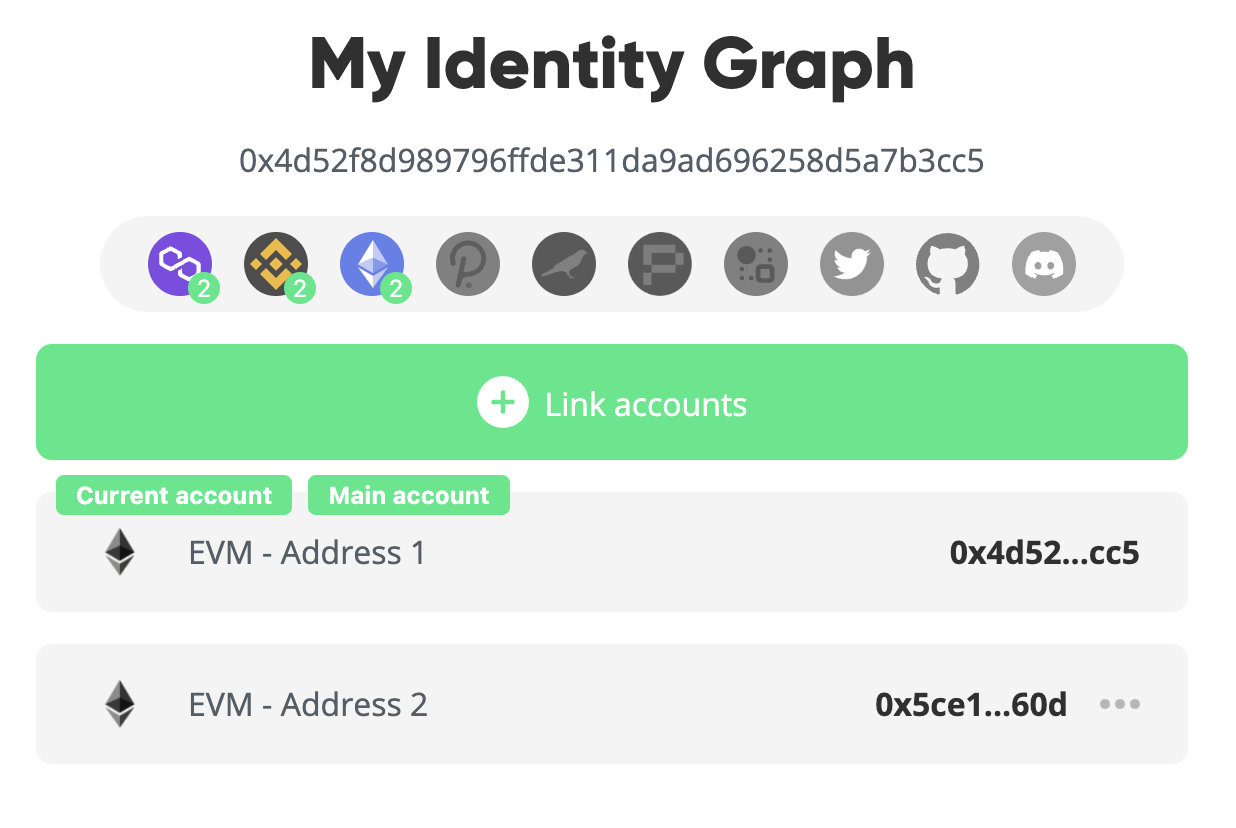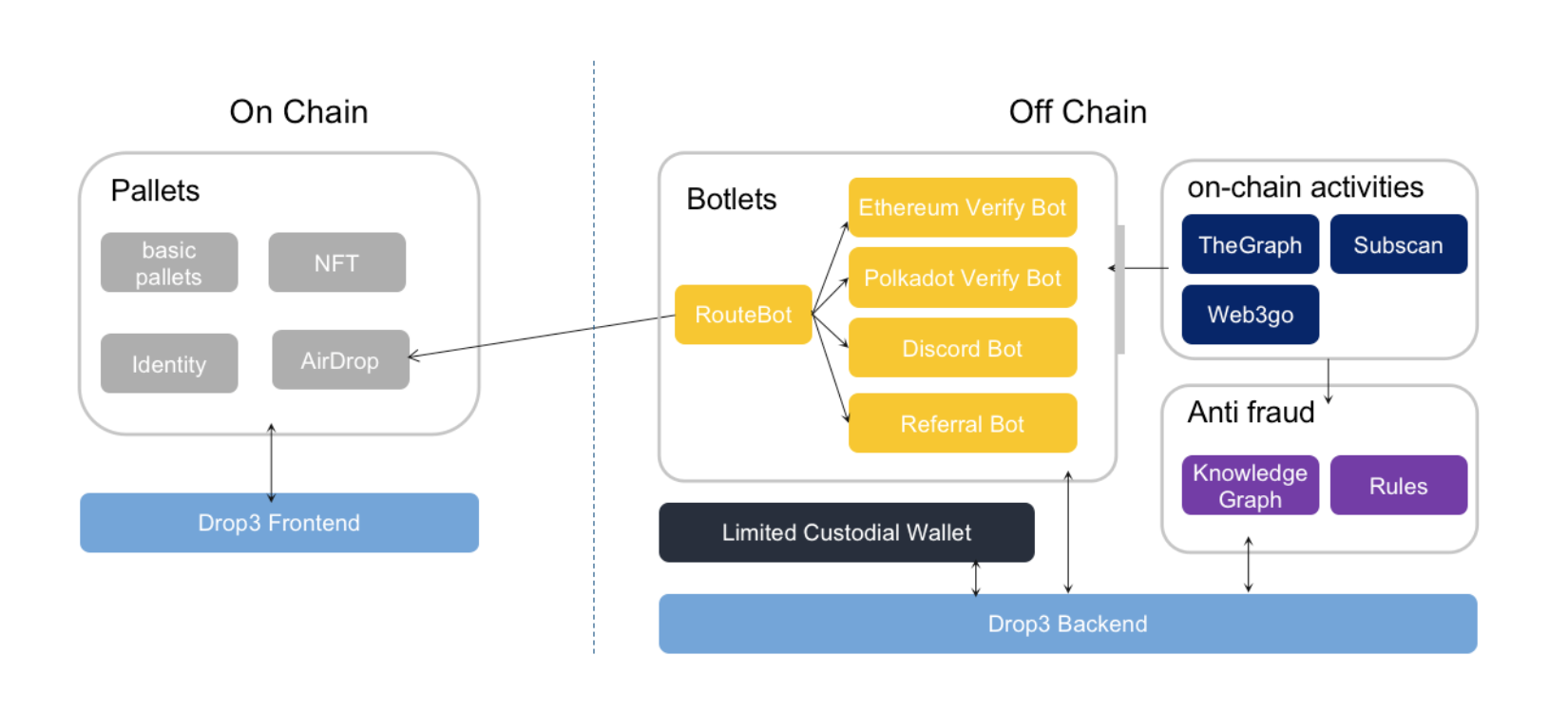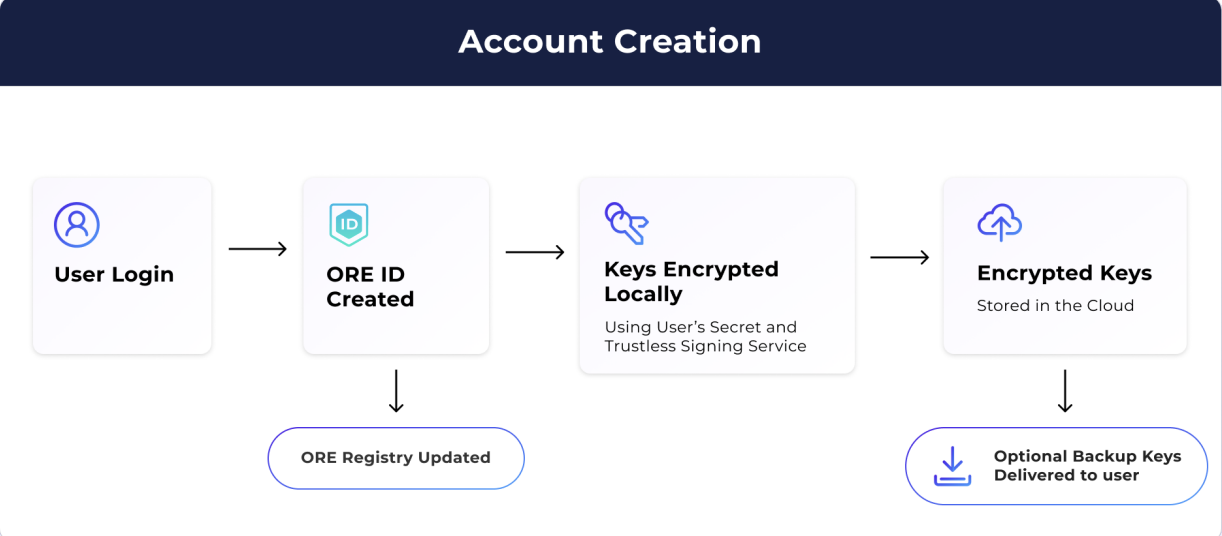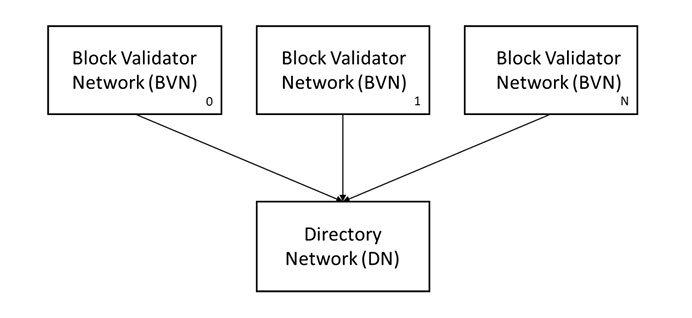Executive Summary
When we look at the current Web2 user identity solutions, we can see that they are mostly linked to centralized corporate organizations. Although convenient for the end-user, this type of online identity is not owned by the user, and the issuers (Google, Facebook, Twitter, etc.) have complete control of them. In Web3, the focus is on decentralization; however, the problem of cross-chain interoperability of identities is a big one to overcome.
This paper examines the current state of cross-chain identity solutions and the technology behind them to understand how they operate and tackle the previously mentioned interoperability problem. Those solutions are:
- Litentry - a decentralized cross-chain identity aggregator which enables linking user identities across multiple networks. Litentry collects, indexes, and distributes DIDs to blockchains in a decentralized way.
- ORE - a cross-chain global identity registry where users have control over their own identity.
- Accumulate (mainnet launch planned for September 2022) - an identity-based, delegated proof-of-stake blockchain solution.
It also shortly covers Decentralized Identifiers (DIDs), Accumulate Digital Identifiers (ADIs), tests and analyzes the project’s solutions and current place in the Web3 market.
This paper does not cover Web3 identity solutions that are not cross-chain, as that is not the main focus of this research.
Introduction
In Web2, most users’ online identities are linked to centralized corporate organizations like Facebook, Twitter, or Google. The problem with this type of identity is that these organizations “own” your identity on the platform and the associated data. That means that the ease of use (single click logins, app interoperability, etc.) often comes with the price mentioned above. Corporate organizations can close and ban users’ accounts and sell their data which has been the case before. As they have all the data from the user, they can (technically) also generate credentials and log into any website using the user’s identity. ‘Thousands of Leaked Facebook Documents Show Mark Zuckerberg as “Master of Leverage” in Plan to Trade User Data’1
Web3 is based on blockchain technology. Aside from use in financial applications, blockchain can be used in creating and managing Self-sovereign digital identities, like SSIs. SSI is a digital identity concept in which an individual or company has complete control over their account and personal data. ‘Self-Sovereign Identities’2
The identity means nothing without claims from trusted sources (government ID credentials, student ID credentials, library card certificates). If many trusted parties assign claims to identity, thus implicitly confirming it, then the identity is valid. We use our ID number, issued by the government, anywhere, and every organization in the country will accept our identity number as it was issued by the trusted party confirming the identity. The validity of the identity is not in the keys, but the claims and the keys are there to verify that we indeed hold those claims.
Currently, when it comes to creating identity in Web3, we have various “approaches” to it:
- A user’s public key can be seen as a kind of identity on the blockchain. However, it is not very user-friendly, and it is limited in terms of cross-chain interoperability and in terms of representing a user. Users can own multiple addresses, thus having multiple “identities.”
- In terms of creating an identity on the Ethereum blockchain, Ethereum Naming Service is the most used. ENS’s job is to map human-readable names like ‘3327.eth’ to machine-readable identifiers such as Ethereum addresses, other cryptocurrency addresses, content hashes, and metadata. ENS addresses can represent the user’s identity and be a kind of a user’s profile with its subdomains.
- Various identity aggregators like Litentry, IDX, Accumulate, ORE network (this is debatable), etc.
- SBTs and soul accounts are also proposed as a possible solution for an identity standard. However, they are currently a concept. They could evolve and become the standard someday.
Goals & Methodology
This research will explore current solutions for creating a cross-chain Web3 identity (aggregators, protocols). After mapping the solutions, this research will propose the next steps in tackling this issue.
This paper will tackle this topic by reviewing various cross-chain solutions’ documentation and whitepapers and exploring their properties, implementation, and differences.
This paper will not be covering Web3 identity solutions that are not cross-chain.
Results & Discussion
Below we will discuss some of the current solutions that are trying to tackle cross-chain identity.
Litentry - identity aggregator
Litentry is a decentralized cross-chain identity aggregator which enables linking user identities across multiple networks. Litentry collects, indexes, and distributes DIDs to blockchains in a decentralized way.
Aggregation is the process of integrating a wide range of digital identities from multiple networks.
“Decentralized identifiers (DIDs) are a new type of identifier that enables verifiable, decentralized digital identity. A DID refers to any subject (e.g., a person, organization, thing, data model, abstract entity, etc.) as determined by the controller of the DID.” DIDs, by design, allow the controller of a DID to prove control over it without requiring permission from any other party. ‘Decentralized Identifiers (DIDs) V1.0’3
Litentry’s main selling point is its decentralized identity and user activity data aggregation infrastructure. It is built on Substrate network.
Protocols could use identity aggregating service for collateralized lending, DeFi insurance rate, and DAO voting power calculations, preventing bots from getting airdrops and various other uses in dApps.
Main features of Litentry:
- Identity management - The primary focus of this platform are identities. Litentry provides anonymous and independent identities from applications and services used by the user.
- Identity Staking - As well as staking tokens and earning, users can “stake” their identity and get rewards.
- Distributed storage of identity data.
- Users do not need to create multiple accounts to use different platforms of services. They can use one identity to interact with various services.
Using Litentry, blockchain projects can “offer” special services to users based on their identity’s quantified data.
“For example, if a new project knows that an account is a Polkadot validator, and it spends hundreds of DOTs on another Parachain for half a year, then the project could directly gift this specific user some token to start to play with, or send him/her an attractive offer of the new DeFi product, or accredit him to be a validated voter.” Litentry4
It features an identity matching and identity staking mechanism, which are at the very core of the Litentry model. But what do they represent exactly?
Identity Matching is blind matchmaking where random anonymous identities are picked from the on-chain pool of identities, and the substrate off-chain worker processes candidate identity data. The network sends the matchwinners DID as a matching opportunity back to the matching buyer (for example, dApp that wants to do an airdrop). The buyer only has access to the matchwinner’s DID; thus match buyer pays the LIT token in exchange for a matching opportunity.
When it comes to identity staking, that is the process in which an identity owner sends the snapshot of their identity document and DID to the identities pool of blockchain and authorizes the read permissions to the validator node. The owner gets staking and matching rewards in the following blocks. The document is encrypted and stored on IPFS or on the on-chain key-value store. DID is stored on-chain.
Litentry’s use cases and platforms that cover these use cases:
- TaskFi & Airdrops Whitelisting - Not yet implemented (Drop3 Platform)
Litentry identity verification system enables Web3 projects to identify target users and filter out bots. It also has a mechanism where users need to complete the task and then get rewarded after the task is complete.
- Social interaction (My Crypto Profile)
Using Litentry’s cross-chain capabilities, this platform enables users to generate proof of ownership of various accounts and create a unique identity graph that connects accounts and addresses from Ethereum, Binance, Polkadot, Kusama, Phala, Twitter, and Github into a unique Web3 identity. This identity can grant access to various dApps and Airdrops. ‘My Crypto Profile | 0x4d52f8d989796ffde311da9ad696258d5a7b3cc5’5

Picture 1: My Crypto Profile Identity Graph
- Identity Data Analytics (Web3Go)
Web3 go is a multi-chain platform that uses Litentry’s DID aggregated identity data to analyze and provide insights into the activity of a particular cross-chain identity or identities.
- Polkadot Name system
Litentry currently acts as the main registrar entry for PNS (Polkadot Name System ). Public data is indexed into the domain name with the private name reserved in Litentry’s TEE side chain. A Trusted Execution Environment (TEE) is an environment for executing code; it guarantees code and data loaded inside to be protected with respect to confidentiality and integrity. ‘Polkadot Name System’6
Litentry products technical overview:
- Litentry Graph
Litentry Graph serves clients with aggregated identity data from Substrate and EVM-based networks. Data is taken directly from the blockchain using APIs such as Polkadot API or using blockchain indexers.

Picture 2: Litentry Graph overview
Litentry Graph - An Express GraphQL server using schema stitching to aggregate a collection of remote schemas and subschemas.
Substrate Indexer - takes the data from the Substrate Archives and transforms it into a schema designed for easy querying. Postgres is used to store the data, and a GraphQL query node is used to serve the data to the Litentry graph as a remote schema. This indexer is hosted by Litentry.
Substrate Archive - Is a Postgres database with a real-time feed of raw events and extrinsic data directly from the blockchain. A GraphQL query node is used to serve the data to the Substrate Indexer.
Ethereum & BSC Indedxers - Litentry uses The Graph.
Substrate Chain - The Substrate Chain component queries data directly from blockchain nodes via web sockets using the Polkadot API.
- Drop 3

Picture 3: Drop3 Overview
Pallets, Ethereum Verify Bot and Web3 go Analysis are not yet implemented
Drop3 is still in the works. However, they have implemented some tasks into the product like getting verified as a human, connecting polkadot wallet etc.
Governance mobile App - We will not go into details of this product as mobile apps are not the topic of the research.
My Crypto Profile
Identity Graph:
{
"version": "v0.1",
"did": "did:mcp:0xd8ebc2be207451ff9eafb3ef7fada06d64d05059",
"main": {
"address": "0x8ad12345c3bc8598d2f602d63e927f5995dcf5d0",
"chain": "ethereum"
},
"web2List": [
{
"cid": "bafybeid5fo6ig6ilobawudqwgsu7so5guaedgvkdwyo6k5hnvlqiqjlhaq",
"account": "x3",
"socialType": "github",
"validator": {
"name": "Litentry Technologies GmbH",
"validatedAt": "1645810190",
"signature": "0x0c4c08460e651c6d6949af21c5b290bed39ffcae6cfdb5ef374760758c9387f3643992be7d5b6f5373fb78540b116750471a9fbcc68e5e5ccb5330250158bfab1c"
}
}
],
"web3List": [
{
"cid": "bafybeihj43osgpx3u5zo567lod25rzfxoqrbspb27v2akdwrgwugziddf4",
"proofs": ["bafybeidcihuc74xxgatyag2q6iiv7tjwn6vjgc4dk6jravthcryrazzkru"],
"address": "5DXZdKSFTEx5rE25dnxamebAoSsA4fqgGT9VPFiiouxP2xM1",
"chain": "polkadot",
"validator": {
"name": "Litentry Technologies GmbH",
"validatedAt": "1645810190",
"signature": "0x0c4c08460e651c6d6949af21c5b290bed39ffcae6cfdb5ef374760758c9387f3643992be7d5b6f5373fb78540b116750471a9fbcc68e5e5ccb5330250158bfab1c"
}
},
{
"cid": "bafybeibic6syxpgnvyp5udyrhhuosm3thbslrfm4ivaauqxtus6vbjghsm",
"proofs": ["bafybeibbsripq672skohuiy6ruztjr5hwclkwoswj6yilt5rkezgmn4f3u"],
"address": "5GgmqtSXGuh2d3LxRiYo691bL4iTYQNjLCAYNakj4xfmLjnm",
"chain": "polkadot",
"validator": {
"name": "Litentry Technologies GmbH",
"validatedAt": "1645810356",
"signature": "0x0c5eb79402646ab7390355404243d73c01cde9ccabd0c26cb1803599c44de8621f69c05848c0e254bdf5849b3ff69fd43b82f3e346cdac3175d052cedf107c3c1c"
}
}
],
"createdAt": "1646836239",
"updatedAt": "1646836239"
}“Each ID graph is extracted by ID pairs. An ID pair is made of two decentralized verifiable ownership claims. Each ID pair claims the joint ownership of two accounts, it can be a pairing of two web3 addresses, or a pairing of a web3 address and a web2 account. Everyone can verify and trust the ID pair. Each ID graph is represented in its unique DID. For ID graphs that have a common crypto address, one ID graph will be merged into the other ID graphs and keep only one MCP DID.” - Litentry ‘Identity Graph’7
Token economy:
Suppose we look at the price of LIT token, which is $0.7227 at the time of writing. Litentry reached an all-time high of $14.79 on Feb 16, 2021. Currently, it’s down -95.11% since its record high.
From the market cap of just $26,979,670 we can see that Litentry hasn’t gained much attention or traction as a solution.
ORE ID - identity registry
Developed by Aikon, ORE is a cross-chain global identity registry where users have control over their own identity. This registry is stored on the ORE blockchain. Users can use ORE ID as a single sign-on to manage their wallets on multiple public blockchains. Single ORE ID account can be used as a wallet on multiple chains because ORE ID accounts hold public and private keypairs for ED 25519, SR25519, and SECP256K1 and SECP256R1 encryption curves.

Picture 4: ORE ID account creation process
“Given how sensitive this data is, we use a Trustless Signing Service that allows a user to decrypt their keys and send a signed transaction to various blockchains using ChainJS library. Both of these modules are open source, so any developer can audit the code.” - ORE network’s whitepaper
ORE ID allows users to access various dApps with a one-click sign-up experience. Users can use social logins of their choosing. ORE ID creates blockchain accounts for the end-user when they sign up and encrypts and stores the user’s private key with their chosen PIN. ORE ID accounts are currently exportable to Scatter Wallet.
When developing an app that uses ORE ID accounts, developers need to register the app and the app logo in order to get their APP-ID and API-key. Documentation is well written and can be found here.
ORE ID operates differently from Litentry as it creates an account that works on multiple chains - it does not aggregate the existing addresses.
Token economy and future of ORE ID:
This project, although an interesting concept, with its market cap of only $ 319,175 doesn’t look like a solution for cross-chain identities and onboarding new users. The current price is $ 0.007984, while its all-time-high was $ 0.320. After testing the ORE ID, it seems that the project has been neglected.
Accumulate - mainnet launch planned for September 2022
Accumulate is an identity-based, delegated proof-of-stake blockchain solution. It plans on creating a universal communication and audit layer for individuals, entities, and blockchains to transact with each other using their version of identifiers that adhere to W3C standards: Accumulate Digital Identifiers (ADIs).
ADIs are human-readable addresses that users choose to represent their presence on the blockchain. Using ADIs accumulate can serve as a communication and audit layer between blockchains, enabling the transfer of tokens between different chains, no matter the consensus mechanism.
ADIs are made of a collection of independent sub-chains. They are managed by:
- Token accounts - Issuing tokens and tracking deposits and withdrawals from a token account.
- Data accounts - Tracking and organizing data.
- Staking accounts - Staking ACME tokens to participate in consensus.
- Scratch accounts - Accruing data that is needed to build consensus.
Accumulate Innovations:
- Identity - Accumulate is centered around ADIs where each ADI defines its own state that is independent of other ADIs. Each ADI has its own state and set of accounts and chains. They can be updated independently. They are distributed over a set of Tendermint networks.
- Synthetic Transactions - Because each ADI has its state, transactions that are routed to an ADI must be processed independently of all other ADIs. Accumulate generates another transaction that performs settlements within an ADI. These transactions are called synthetic since the protocol generates them in response to the transactions initiated by the user.
- Scratch Accounts - Accumulate provides scratch accounts, which reduce the cost of using the blockchain for consensus building. “Scratch accounts allow processes to provide cryptographic proof of validation and process without overburdening the blockchain” - Accumulate Whitepaper ‘Whitepaper - Accumulate’8
Integrations:
Accumulate protocol supports various smart contract roll-ups. This allows Accumulate to track the state and validity of contracts on third-party chains. Using Accumulate, organizations can process smart contracts across various layer one protocols (Solana, Ethereum, Tezus).
Accumulate also plans on integrating with Layer-0 protocols, for example, Cosmos and Polkadot. In that case, Accumulate can be utilized to manage the transferred asset under the identity (ADI) of a buyer and to continue tracking the assets across multiple chains.
Technical overview:

Picture 5: Accumulate system overview
In contrast to the traditional blockchain, where architecture is centered around blocks, Accumulate is centered around accounts. Each account is treated as an independent chain and managed as a growing Merkle tree, and blocks are treated as a synchronization point for all chains in the networks.
Inside the Directory Network and Block Validator Networks is the interconnected network of chains responsible for collecting signatures, communicating with each other, and anchoring roots to other blockchains.
These chains are:
- Signature chain, which collects signatures for a period of 2 weeks
- Main chain which records transactions in the origin account and accounts that are modified by the transactions
- Synthetic Transaction chain, which is used to store cryptographic proof that a synthetic transaction was actually produced by a particular BVN.
- Binary Patricia Trie, which collects hashes of the current state and history of accounts in BVN and DN.
- Root Anchor Chain - collects an anchor once per block from every account and system chain updated during the block.
- Intermediate Anchor Chain: Within the Directory Network, this chain collects anchors from the Root Anchor chain of every Block Validator Network once per block.
As our topic is identity we will focus more on the account and identity architecture of Accumulate, which is actually at the very core of this protocol:
Accumulate supports these accounts:
- Lite Token Account - Traditional address whose URL contains a public key hash and human-readable suffix denoting the token or a data type held by the account. When tokens are sent to this account, the account is created if it doesn’t exist. Users can create a key and have a trusted party send tokens to their URL.
- Lite Data Account - It is used for collaboration with Factom protocol. Lite Data Accounts are similar to token accounts, but they are limited to writing data.
- Accumulate Digital Identifier (ADI) - Primary unit of organization within Accumulate. ADIs can issue their tokens.
- Key book and Key Page - Belongs to an ADI and is used for key management.
- ADI Token and Data Accounts are explained at the beginning of the topic
Identity architecture:
Users can participate in the network through ADIs and Lite Accounts. ADIs give users access to smart contracts, off-chain consensus building, and dynamic key management. Lite Token and Data Accounts are just a “lite” version of ADIs.
ADIs can only be created through the spending of Credits issued through the Accumulate protocol. Users can also use their ADI to sponsor the creation of other ADIs for themselves or others. These identities can govern token issuance, off-chain consensus building, and multisig signatures.
“ADI Data and Token Account URLs have the general format acc://<ADI>/<directory>/<account> where the prefix acc : // specifies the Accumulate blockchain, ADI specifies the toplevel identity in control of the URL, directory specifies a particular type of account, and account specifies data or tokens.” - Accumulate Whitepaper.
We will not venture deeper into the protocol architecture as it is reasonably complex and goes well beyond this research topic. The main takeaway is that it aims to create cross-chain transaction-compatible accounts using ADIs. The details of a way how this will work in practice are not covered in the whitepaper.
This project is still in development, which means the practical implementations of the concepts presented in the whitepaper are still under the big question mark sign.
Conclusion
We can see from the explored “solutions” that tackling cross-chain identity problems in Web3 is not an easy task. Many projects emerged but fell victim to their lousy architecture and the general public’s low interest. Different blockchains use different hash functions, making creating a standardized cross-chain identity hard. SBTs, a newly proposed solution by E. Glen Weyl, Puja Ohlhaver, and Vitalik Buterin aim to solve the problem of Web3 identities by creating a new standard. In their paper Decentralized Society: Finding Web3’s Soul, they propose a new solution: Soul Accounts and Soul Bound Tokens. However, there is no talk about Soul accounts being compatible with multiple chains. For more information, see ERFC-261, which we already covered in that paper. However, the concept of creating custom identity systems like the ones above mentioned is an exciting topic, and we think it should be looked into further, regardless of whether building a cross-chain identity or not.
Bibliography
Footnotes
NBC News <<https://www.nbcnews.com/tech/social-media/mark-zuckerberg-leveraged-facebook-user-data-fight-rivals-help-friends-n994706>> [accessed 14 June 2022].↩︎
Bosch Global <<https://www.bosch.com/stories/self-sovereign-identities/>> [accessed 14 June 2022].↩︎
<[Https://www.w3.org/TR/did-core/](https://www.w3.org/TR/did-core/)> [accessed 15 June 2022].↩︎
‘Introducing Litentry’, Medium, 2020 <<https://litentry.medium.com/introducing-litentry-d47b23d54281>> [accessed 15 June 2022].↩︎
<[Https://mycryptoprofile.io/profile/0x4d52f8d989796ffde311da9ad696258d5a7b3cc5](https://mycryptoprofile.io/profile/0x4d52f8d989796ffde311da9ad696258d5a7b3cc5)> [accessed 15 June 2022].↩︎
<[Https://www.pns.link/](https://www.pns.link/)> [accessed 15 June 2022].↩︎
<[Https://docs.litentry.com/products/my-crypto-profile/product-features/identity-graph](https://docs.litentry.com/products/my-crypto-profile/product-features/identity-graph)> [accessed 15 June 2022].↩︎
2022 <<https://accumulatenetwork.io/whitepaper/>> [accessed 16 June 2022].↩︎